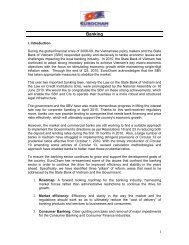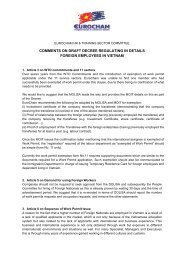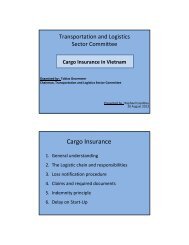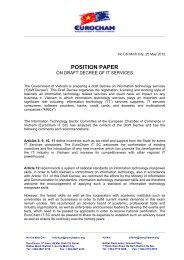ASEAN MUTUAL RECOGNITION ARRANGEMENT ON TOURISM ...
ASEAN MUTUAL RECOGNITION ARRANGEMENT ON TOURISM ...
ASEAN MUTUAL RECOGNITION ARRANGEMENT ON TOURISM ...
Create successful ePaper yourself
Turn your PDF publications into a flip-book with our unique Google optimized e-Paper software.
2. <strong>ASEAN</strong> Common Competency Standards for Tourism ProfessionalsTopics2.1 Introduction2.2 Rationale for Standards Development2.3 Priority for Tourism Standards2.4 Basis of the ACCSTP2.5 The Importance of a Competency Framework2.6 Structure of the Competency Standards2.7 Common Labour Divisions2.8 Core, Generic and Functional Competencies2.9 Future DevelopmentsKey terms found in this chapter<strong>ASEAN</strong> Tourism Agreement (ATA)<strong>ASEAN</strong> Common Competency Standards for Tourism Professionals (ACCSTP)<strong>ASEAN</strong> Strategic Plan<strong>ASEAN</strong> Task Force on Tourism Manpower Development (ATFTMD)Capacity Building for an <strong>ASEAN</strong> Mutual Recognition Arrangement in Tourism(CBAMT) ProjectCore, Generic and Functional CompetenciesRegional Qualifications Framework and Skills Recognition System (RQFSRS)Toolboxes (for each Competency Standard in the 6 Labour Divisions)2.1 IntroductionAt their eighth summit in November 2002, <strong>ASEAN</strong> leaders signed the <strong>ASEAN</strong> TourismAgreement (ATA) which aimed to create favourable industry conditions in supportof <strong>ASEAN</strong>’s vision for a free flow of tourism services before 2020. As part of theagreement, the <strong>ASEAN</strong> leaders agreed to upgrade tourism education, curricula andskills through the formulation of competency standards and certificationprocedures, thereby leading to mutual recognition of skills and qualifications inthe <strong>ASEAN</strong> region. In addition, it supported the wider <strong>ASEAN</strong> agenda of encouragingMember States to adopt national frameworks for qualifications, competencies andtraining.2.2 Rationale for Standards DevelopmentThe rationale for development of <strong>ASEAN</strong> Common Competency Standards wasbased on the assumption that if a framework of competencies could be compiled,shared and adopted by the <strong>ASEAN</strong> Member States as a common reference forqualifications, this would lay the foundations and conditions necessary for an MRAP a g e | 14














